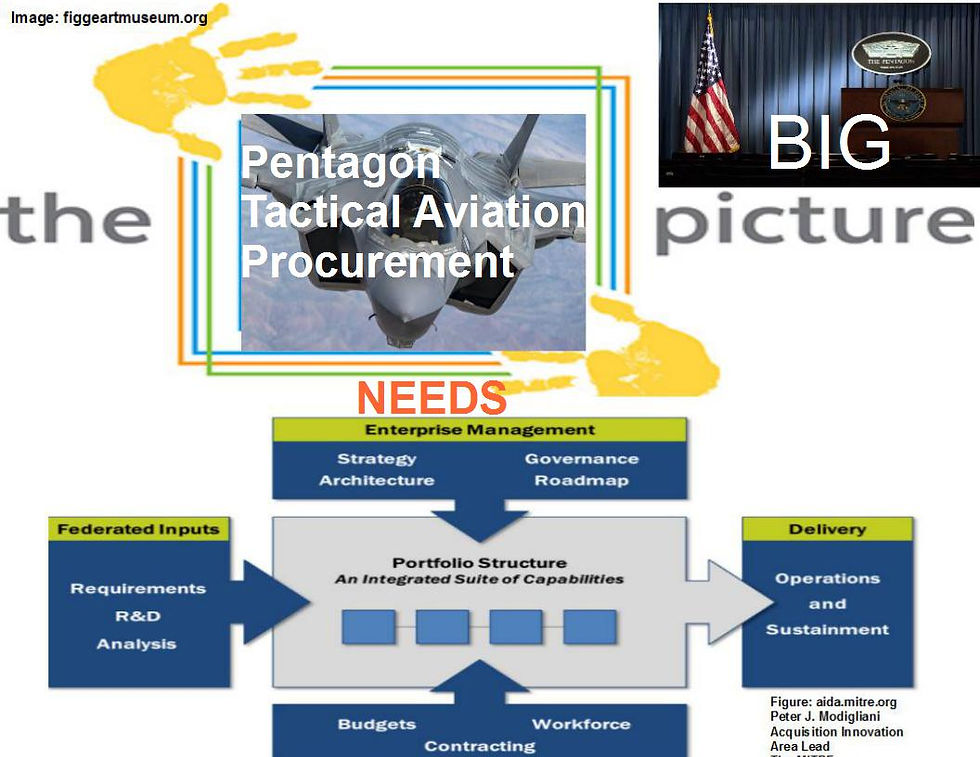Pentagon Lacks Big Picture For Fighter Jet Procurement, Watchdog Says
- Ken Larson

- Jan 10, 2023
- 3 min read

{PLEASE CLICK IMAGE TO ENLARGE}
“AIR FORCE TIMES” By Rachel S. Cohen
“The Pentagon plans to spend about $100 billion in the next five years to modernize its tactical aviation fleets — that is, fighter jets, attack planes and electronic warfare platforms. But the military should look at those plans holistically to avoid wasting money and duplicating effort, the Government Accountability Office argued in a report
"The lack of an integrated acquisition portfolio review of tactical aircraft platforms leaves DOD and Congress with limited insight into interdependencies, risks and related trade-offs among some of DOD’s highest priority and most expensive investments,” GAO said.“
________________________________________________________________________________
“A federal watchdog wants to make sure the U.S. military is getting the best bang for its buck when buying new aircraft.
“Without an analysis of the tactical aircraft platform portfolio and a requirement to report underlying information externally, DOD and Congress will continue to have limited information when making major investment decisions,” GAO said.
That lack of transparency threatens to make the fiscal 2024 budget less effective than it otherwise might be, the researchers warned. Poorly informed decisions now could jeopardize U.S. troops in a potential fight against another advanced military like those of Russia or China.
The Defense Department responded that it plans to study its overall tactical portfolio within the next “one to two fiscal years.” But the department pushed back on the suggestion to provide that data to Congress, saying it’s internal information that may not reflect their final decision.
Most of the tactical aviation enterprise falls under the Air Force, but the Navy and Marine Corps boast sizable fleets as well. That includes the Air Force’s A-10C, F-15, F-16, F-22A and F-35A; the Navy’s F/A-18E/F, EA-18G and F-35C; and the Marine Corps’ AV-8B, F/A-18A-D and F-35B.
Many of those aircraft have been in service for at least 30 years and are past their recommended lifespan. Still, the platforms are key to securing territory in times of war — a lesson highlighted by the Russian air force’s failures in Ukraine over the past 10 months.
“Tactical air forces are critical to achieving and maintaining air dominance during combat operations,” GAO wrote. “These aircraft often operate during the first days of a conflict to penetrate enemy air space [and] defeat air defenses.”
Once tactical air units control the skies, other ground, air and naval troops can more safely begin their own missions.
Air Force officials have said at least 2,100 tactical aircraft would be sufficient to meet future needs, and the Navy and Marine Corps are pushing for nearly 1,200 of their own.
To hit those goals, the services planned to buy thousands of cutting-edge jets like the F-35. But testing delays and technical problems have forced the military to meet demand by instead keeping older airframes around longer.
Lackluster mission-capable rates — how often an aircraft can fly and perform at least one of its core missions — plus supply chain issues and other factors that drive up the cost of maintaining these complex, aging planes have made that a dicier proposition.
“Studies found that existing aircraft did not have the capabilities needed to compete in future combat scenarios, and some noted the need to invest in advanced technologies,” GAO wrote.
Several pointed to capability and capacity issues that could hinder the military’s air response in a crisis. GAO warned those could continue without more well-rounded, forward-looking plans.
In the meantime, Congress is becoming more amenable to the Pentagon’s proposals to retire hundreds of its oldest, least-relevant airframes.
That can lead to a more lethal force, GAO said, but only with the right investments in research and development.
It’s “a delicate balance and is a decision that should be made with the most detailed information,” according to the report.
“The lack of an integrated acquisition portfolio review of tactical aircraft platforms leaves DOD and Congress with limited insight into interdependencies, risks and related trade-offs among some of DOD’s highest priority and most expensive investments,” GAO said.”
About Rachel S. Cohen

Rachel Cohen joined Air Force Times as senior reporter in March 2021. Her work has appeared in Air Force Magazine, Inside Defense, Inside Health Policy, the Frederick News-Post (Md.), the Washington Post, and others.




Comments